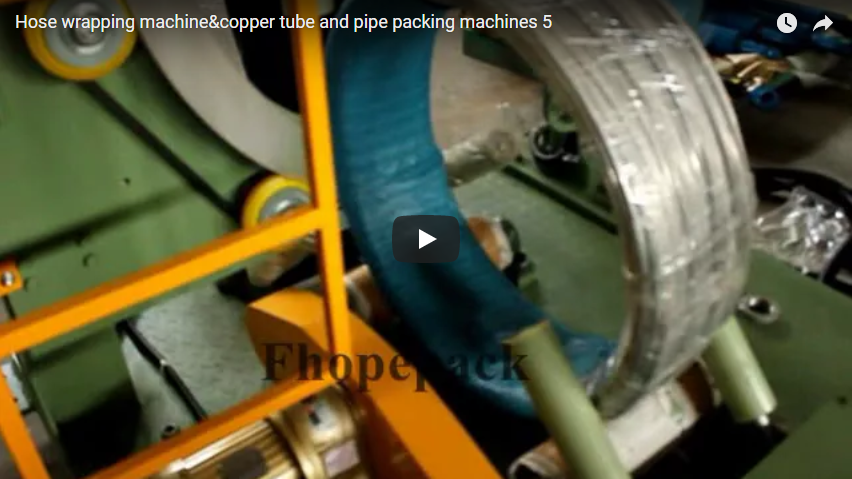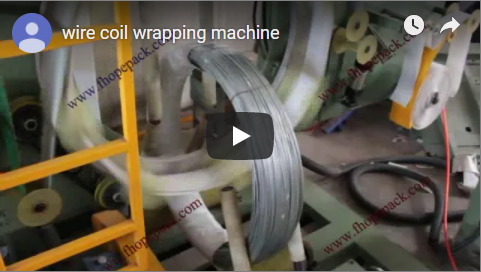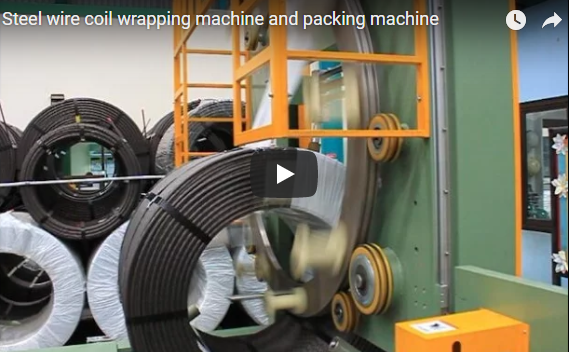Revolutionizing Steel Handling: A Deep Dive into Advanced Wire Wrapping and Coil Packing Machines
In the demanding world of metallurgical industries and steel processing, ensuring the integrity and protection of products like PC wire, GI wire, and spring wire coils during storage and transit is paramount. Traditional manual packing methods often fall short, leading to inefficiencies, potential damage, and increased labor costs. Enter the automated wire wrapping and coil packing machine – a cornerstone of modern industrial packaging solutions.
(Video illustrating the operation of a wire wrapping machine)
This article delves into the technology, benefits, and practical applications of these essential machines, offering insights for professionals seeking to optimize their packaging processes.
1. The Challenge: Limitations of Manual Coil Packaging
Before exploring the automated solution, let's acknowledge the pain points of manual or semi-automated wrapping:
- Inconsistency: Manual wrapping tension and overlap can vary, potentially compromising package integrity.
- Inefficiency: Labor-intensive processes slow down production throughput and increase operational costs.
- Safety Risks: Handling heavy coils and wrapping materials manually poses ergonomic challenges and potential injury risks.
- Material Waste: Inconsistent application can lead to excessive use of wrapping materials.
- Damage Potential: Inadequate or inconsistent wrapping leaves coils vulnerable to environmental factors (moisture, dust) and physical damage during handling.
2. The Solution: Automated Wire Wrapping & Coil Packing Machines
A wire wrapping machine, often integrated into a broader coil packing line, is specialized industrial equipment designed for the secure and efficient exterior wrapping of circular items, particularly steel wire coils, cable coils, hose coils, and similar products. These machines utilize orbital wrapping technology, where the wrapping material shuttle revolves around the coil's circumference while the coil itself may rotate, ensuring comprehensive coverage.
3. Core Technologies & Feature Breakdown
Modern wire wrapping machines boast sophisticated features designed for automation, efficiency, and precision:
3.1. Automated In-Feeding & Handling Systems
Seamless integration with production lines is key. Features often include:
- Conveyor systems for automatic coil loading and unloading.
- Tilters or upenders to position coils correctly for wrapping.
- Centering devices to ensure accurate wrapping alignment.
3.2. Intelligent Packing Material Management
Optimizing material usage is crucial for cost-effectiveness:
- Automatic Film/Paper Cutting & Clamping: Precisely cuts the wrapping material (like stretch film, VCI paper, crepe paper) at the end of the cycle and secures it.
- Packing Material Calculation: Advanced PLC systems can calculate the required material length based on coil dimensions, minimizing waste.
- Adjustable Overlap Control: Allows operators to set the desired percentage of overlap for varying levels of protection.
3.3. Precision Wrapping Mechanism
The heart of the machine ensures high-quality results:
- Orbital Ring Design: Robust ring structure carries the material shuttle around the coil.
- Variable Speed Control: Both ring rotation and conveyor/roller speeds can often be adjusted to match production needs and coil types.
- Tension Control System: Ensures the wrapping material is applied with consistent, optimal tension for package stability.
3.4. User Interface and Control
Ease of use and monitoring are vital:
- HMI Touch Screen: Intuitive interface for setting parameters, monitoring status, and troubleshooting.
- PLC Control System: Reliable automation control for consistent and repeatable wrapping cycles.
- Program Memory: Stores different wrapping recipes for various coil sizes and types.
4. Key Technical Specifications (Example Parameters)
When evaluating a wire wrapping machine, consider these typical specifications:
- Coil Outer Diameter (OD): e.g., 500mm - 1500mm
- Coil Inner Diameter (ID): e.g., 300mm - 800mm
- Coil Width: e.g., 100mm - 600mm
- Coil Weight: e.g., 50kg - 2000kg
- Wrapping Material: Stretch Film (LLDPE), VCI Paper/Film, Crepe Paper, HDPE Woven Belt
- Material Roll OD/ID/Width: Specific to machine design
- Wrapping Speed: e.g., approx. 20-60 seconds/coil (depends on coil size & layers)
- Overlap Rate: Adjustable, e.g., 10% - 90%
- Power Supply: e.g., 380V, 50Hz, 3-Phase (or customized)
- Control System: PLC & HMI
Note: Specifications vary significantly between models and manufacturers.
5. Applications Beyond Basic Wire Wrapping
While crucial for PC wire, GI wire, and spring wire, the applications extend to:
- Steel Coils: Hot-rolled, cold-rolled, galvanized, and stainless steel coils.
- Aluminum Coils: Protecting sensitive surfaces.
- Copper Wire & Cable Coils: Ensuring product integrity.
- Hose & Pipe Coils: Bundling and protecting industrial hoses and pipes.
- Bearing & Tyre Industries: Wrapping large circular components.
6. The Operator's Perspective: Efficiency Gains in Action
Implementing an automated wire wrapping machine often yields immediate, tangible results. Imagine reducing a manual wrapping process that took several minutes per coil down to under 60 seconds with automation. Operators previously engaged in strenuous manual labor can be reassigned to higher-value tasks. Training on modern HMI interfaces is typically straightforward, allowing teams to quickly adapt. The consistency achieved eliminates rework due to poorly wrapped coils, directly impacting quality control metrics and customer satisfaction. It's a shift from labor-intensive wrapping to process oversight.
7. Summarized Benefits of Automation
Investing in a wire wrapping and coil packing machine delivers significant advantages:
- Enhanced Product Protection: Uniform wrapping shields coils from moisture, dust, and transit damage. Use of VCI materials provides crucial corrosion protection.
- Increased Efficiency: Drastically reduces packing time compared to manual methods, boosting throughput.
- Reduced Labor Costs: Frees up manpower from manual wrapping tasks.
- Improved Safety: Minimizes manual handling of heavy coils and wrapping materials.
- Material Savings: Precise control over material usage and overlap reduces waste.
- Professional Appearance: Consistent, tightly wrapped coils enhance brand image.
- Process Integration: Can be seamlessly integrated into automated production and logistics workflows.
8. Making the Right Choice
Selecting the appropriate machine involves considering:
- Coil dimensions (ID, OD, Width) and weight range.
- Required throughput (coils per hour).
- Types of wrapping materials needed (film, paper, VCI).
- Level of automation required (stand-alone vs. fully integrated line).
- Budget and available footprint.
Conclusion: Investing in Future-Proof Packaging
The wire wrapping machine and coil packing machine are indispensable assets for industries handling coiled products. They represent a significant step up from manual processes, offering unparalleled efficiency, protection, and consistency. By automating this critical stage, businesses can safeguard their products, optimize their operations, reduce costs, and ultimately deliver greater value to their customers.
For more information on specific solutions tailored to your needs:
Explore Wire Coil Wrapping Machine Options
Contact us for a consultation: info@fhopepack.com






